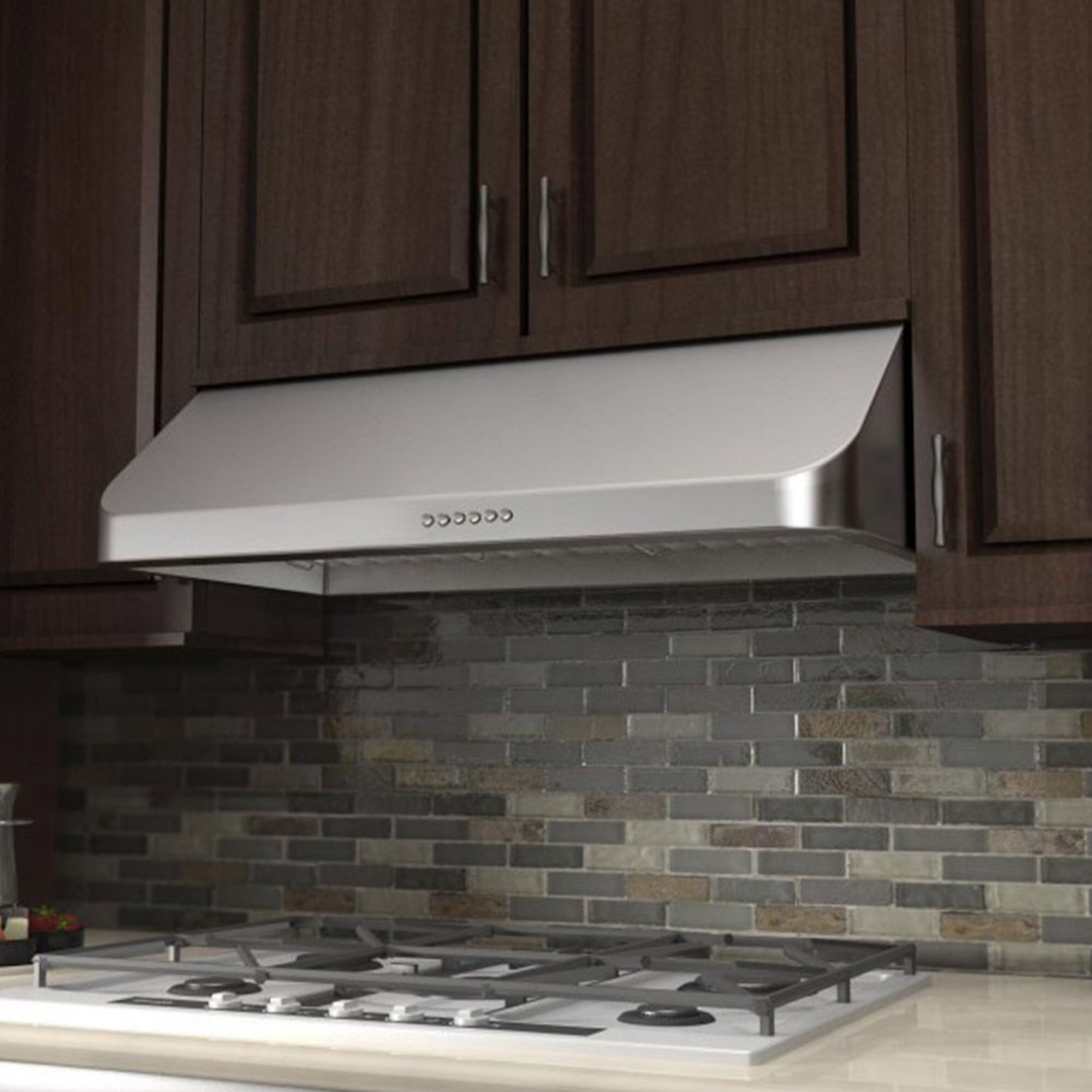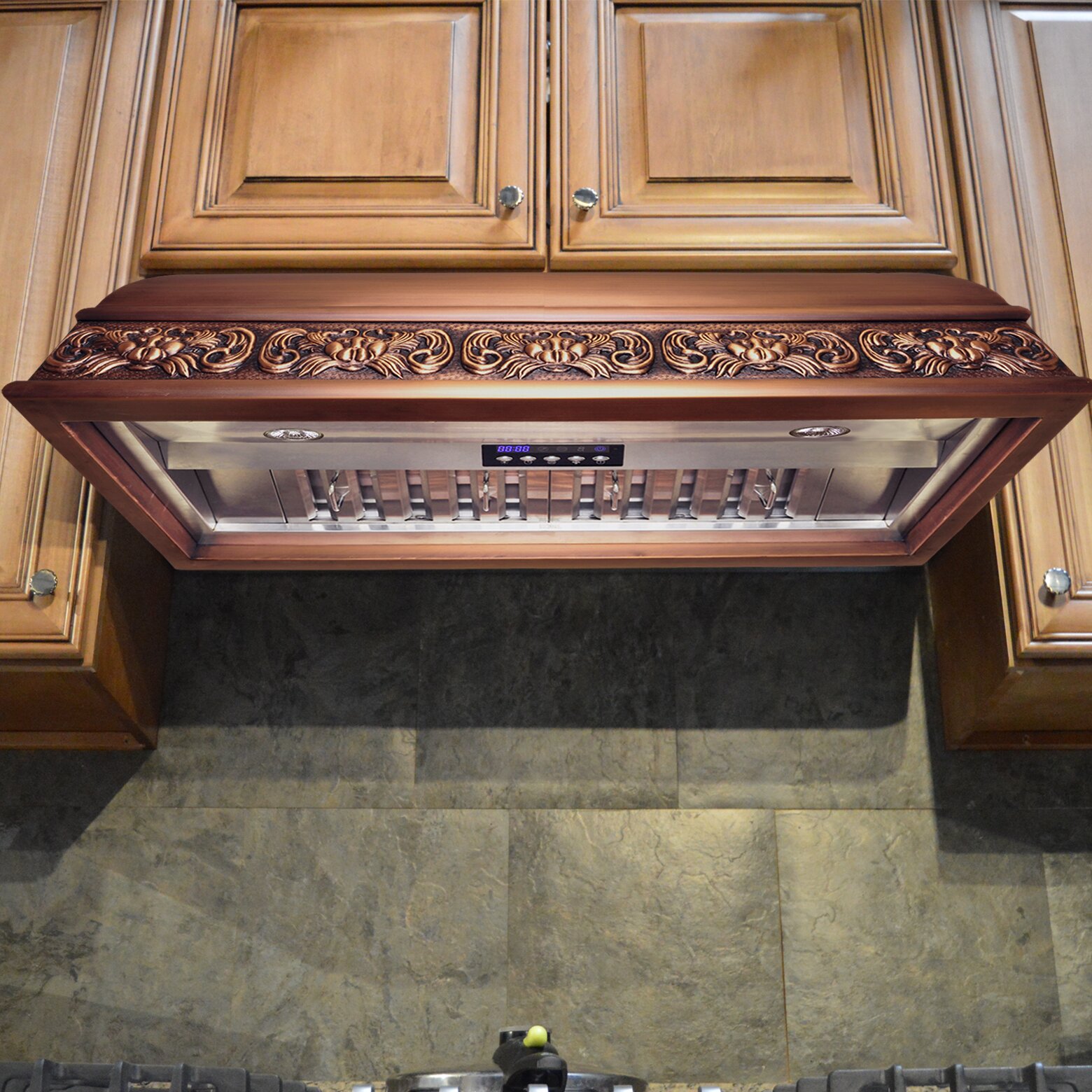Top 30-Inch Ducted Under Cabinet Range Hoods: Best 30 Inch Ducted Under Cabinet Range Hood

Choosing the right range hood can significantly impact your kitchen’s air quality and overall cooking experience. A 30-inch ducted under-cabinet range hood offers a sleek, space-saving solution for many kitchens. This section delves into the features and specifications of three top-rated models to help you make an informed decision.
Top 30-Inch Ducted Under Cabinet Range Hoods: A Comparison
The following table compares three leading 30-inch ducted under-cabinet range hoods based on key performance indicators. Note that specific models and their availability may vary over time, so it’s crucial to check current specifications with retailers before purchasing.
| Feature | Model A (Example) | Model B (Example) | Model C (Example) |
|---|---|---|---|
| CFM Rating | 600 CFM | 450 CFM | 550 CFM |
| Noise Level (Sones) | 6.5 | 5.0 | 6.0 |
| Filter Type | Aluminum Mesh | Stainless Steel | Aluminum Mesh, Dishwasher Safe |
| Material | Stainless Steel | Stainless Steel | Stainless Steel |
Motor Types and Their Impact
Range hood motors are typically either centrifugal or axial. Centrifugal motors use a spinning impeller to create suction, generally offering higher CFM ratings at the cost of increased noise. Axial motors, on the other hand, use a propeller-like fan, resulting in quieter operation but often with lower CFM capabilities. The choice depends on your priorities: high extraction power or quieter operation. Model A, for instance, likely uses a centrifugal motor given its high CFM, while Model B’s lower noise level suggests an axial motor. This trade-off between power and noise is a common consideration in range hood selection.
Installation Process: A Visual Guide
Imagine a three-step process visually represented.
Step 1: Mounting the Hood. This step involves securely attaching the hood’s mounting bracket to the underside of your kitchen cabinets. Ensure the bracket is level and firmly fixed to the cabinet using appropriate screws. Precise measurements are crucial to ensure proper alignment with your cooktop. The visual would show the bracket affixed to the cabinet, with screws visible and a level being used for accurate placement.
Step 2: Connecting the Ductwork. This is where the ducting is connected to the hood’s exhaust port and then routed to the outside of your home. This involves using flexible or rigid ducting, ensuring airtight seals to prevent leaks and maximize efficiency. The visual would depict the ducting connected to the hood, with the pathway of the ductwork clearly shown. It might also illustrate the use of sealant for airtight connections.
Step 3: Electrical Connection and Finalization. Finally, the electrical wiring needs to be safely connected to the hood, following all safety regulations. After the electrical connection is verified, the hood is carefully attached to the mounting bracket, and the filter is installed. The visual would show the electrical connections being made, with appropriate labeling and safety precautions evident. The final image would showcase the installed and operational hood.
User Reviews and Expert Opinions

Choosing the right 30-inch ducted under cabinet range hood involves careful consideration of performance, features, and value. User reviews and expert opinions offer invaluable insights into the strengths and weaknesses of various models, helping consumers make informed decisions. This section delves into user experiences and professional assessments to guide your purchasing process.
Detailed User Reviews: Strengths and Weaknesses
User reviews highlight both the positive and negative aspects of different range hoods. Understanding these diverse perspectives is crucial for making a well-informed choice. The following are three examples of detailed user reviews, focusing on specific product strengths and weaknesses.
- Review 1: High-End Model (Brand X): This user praised the powerful suction and quiet operation of the high-end model. They particularly appreciated the sleek design and ease of cleaning. However, they noted the high price point as a significant drawback and mentioned the LED lighting could be brighter. Overall, they felt it was a great hood, but not worth the cost for everyone.
- Review 2: Mid-Range Model (Brand Y): This review highlighted the excellent value for money offered by this mid-range model. The user found the suction to be adequate for their needs, and they appreciated the simple controls and easy installation. However, they mentioned some minor issues with the filter needing more frequent cleaning than expected and the noise level being slightly higher than advertised.
- Review 3: Budget-Friendly Model (Brand Z): This user found the budget-friendly model to be a good option for smaller kitchens. They praised its affordability and effective suction for everyday cooking. However, they noted that the build quality felt less substantial than more expensive models, and the noise level was considerably higher during high-speed operation.
Comparison of Leading Brands
Comparing features and pricing across leading brands helps illustrate the range of options available and the trade-offs involved. The following table summarizes key features and pricing for three leading brands of 30-inch ducted under cabinet range hoods. Note that prices can vary depending on retailer and specific model.
| Brand | Key Features | Approximate Price Range | Notable Strengths/Weaknesses |
|---|---|---|---|
| Brand A | Powerful suction, quiet operation, stainless steel construction, multiple speed settings, LED lighting | $500 – $800 | Strengths: High performance, quiet operation. Weaknesses: Higher price point. |
| Brand B | Good suction, affordable price, easy installation, dishwasher-safe filters | $300 – $500 | Strengths: Value for money, easy to install. Weaknesses: May not be as powerful or quiet as higher-end models. |
| Brand C | Sleek design, multiple filter options, energy-efficient motor | $600 – $1000 | Strengths: Stylish design, various filter options. Weaknesses: Can be expensive. |
Key Factors to Consider Before Purchasing, Best 30 inch ducted under cabinet range hood
Based on expert opinions and user feedback, several key factors should be considered before purchasing a 30-inch ducted under cabinet range hood. These factors will help ensure you select a model that meets your specific needs and budget.
- Suction Power (CFM): The CFM rating indicates the hood’s ability to remove smoke, grease, and odors. Higher CFM ratings are generally better, but the necessary CFM depends on the size of your kitchen and cooking habits. A smaller kitchen might only need 300 CFM, while a larger kitchen with frequent heavy cooking might require 600 CFM or more.
- Noise Level (Sonne): Range hoods produce varying levels of noise. Consider the noise level, especially if your kitchen is open to other living areas. Lower sone ratings indicate quieter operation.
- Budget: Range hoods are available at a wide range of price points. Determine your budget before you start shopping to narrow down your options. Consider the long-term value proposition; a more expensive model might offer better performance and longevity.
Installation and Maintenance Guidance

Installing and maintaining your 30-inch ducted under cabinet range hood correctly ensures optimal performance and longevity. Proper installation prevents issues like poor ventilation or excessive noise, while regular maintenance keeps your hood running smoothly and efficiently. This section provides clear guidance on both processes.
Installing a 30-Inch Ducted Under Cabinet Range Hood
A successful installation requires careful planning and the right tools. Follow these steps for a safe and effective installation.
- Preparation: Turn off the power to the circuit that will supply the range hood. Carefully measure the space above your stove to ensure the hood fits correctly and has adequate clearance. Consult your hood’s installation manual for specific requirements.
- Mounting the Hood: Securely attach the mounting brackets to the underside of your cabinet, ensuring they are level and properly positioned. Use appropriate screws for your cabinet material.
- Connecting the Ductwork: Attach the ductwork to the hood’s exhaust outlet. Use duct tape or clamps to create a secure and airtight seal to prevent air leaks and maximize ventilation. Extend the ductwork to the outside of your home, following local building codes. Avoid sharp bends in the ductwork, as these can restrict airflow.
- Electrical Connections: Carefully connect the hood’s wiring to the appropriate circuit, following the wiring diagram provided in the installation manual. Ensure all connections are secure and properly insulated to prevent electrical hazards.
- Testing: Turn on the power to the circuit. Test the hood’s functionality at various speed settings. Check for proper ventilation and listen for any unusual noises. If you encounter any issues, refer to the troubleshooting section below.
Necessary tools include a screwdriver (Phillips and flathead), a level, measuring tape, duct tape or clamps, wire strippers and connectors, and potentially a drill with appropriate drill bits depending on your cabinet material. Always prioritize safety by wearing appropriate safety glasses and using caution when working with electricity.
Range Hood Filter Types, Cleaning, and Replacement
Range hood filters trap grease and other airborne particles, keeping your kitchen clean and your hood functioning efficiently. Different filter types require different cleaning and replacement procedures.
- Aluminum Mesh Filters: These are the most common type. They can be washed in hot, soapy water or in a dishwasher. Regular cleaning (at least monthly, depending on usage) is essential. Replacement is typically needed every 1-2 years, depending on wear and tear.
- Charcoal Filters: These filters absorb odors but do not filter grease. They are used in recirculating hoods (hoods without ductwork). Charcoal filters are generally not washable and must be replaced every 3-6 months, depending on usage.
- Stainless Steel Filters: These are durable and easy to clean. They can be washed by hand or in a dishwasher. Regular cleaning is essential for optimal performance. Replacement may be needed less frequently than other filter types.
Always refer to your range hood’s manual for specific filter cleaning and replacement instructions.
Troubleshooting Common Range Hood Issues
Addressing common issues promptly ensures your range hood continues to perform effectively.
- Poor Ventilation: Check for blockages in the ductwork, a clogged filter, or a malfunctioning fan motor. Clean or replace the filter, inspect the ductwork for obstructions, and test the fan motor. If the motor is faulty, it will likely require professional repair or replacement.
- Excessive Noise: Excessive noise can be caused by loose components, a faulty fan motor bearing, or improper installation. Check for loose screws or parts and tighten them. If the noise persists, the fan motor may need attention from a qualified technician.
- Hood Not Turning On: Check the circuit breaker to ensure power is supplied to the hood. Examine the wiring connections for any loose or damaged wires. If the issue persists, contact a qualified electrician.
Remember, always disconnect the power supply before performing any maintenance or troubleshooting on your range hood.
